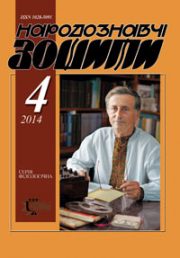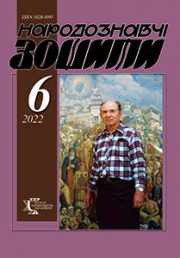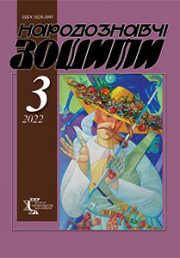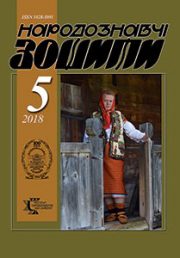The Ethnology Notebooks. 2020. № 3 (153), 647—651
UDK 745.51:008(477.83/.86)
DOI https://doi.org/10.15407/nz2020.03.647
FORMATION AND DEVELOPMENT OF ETNODESIGN IN GALICIA (OF THE FIRST HALF OF THE XXTH CENTURI)
ODREKHIVSKYI Roman
ORCID ID: 0000-0003-3581-4103
Dr. hab. in Art Studies, Associated Professor
Professor of the Department of Design,
Ukrainian National Forestry University,
General Chuprynka str., 103, Lviv, 79057
Contacts: e-mail: odre2010@ukr.net
Abstract. Introduction. Galicia is one of the most culturally rich regions of Ukraine. Folk arts and crafts are developed here from ancient times. So, traditional folk art has significantly influenced the development of design in Galicia. This has led to the creation of a special trend in the development of design, which we call ethnodesign. Problem Statement. My goal is to show how traditional folk art carving has influenced the creation and development of interior design and the environment.This is both a specific form and a specific decoration of products. The purpose of the study is to begin a comprehensive study of the formation and development of ethno-design as a special trend that arose on the basis of the influence of folk art. Methods. Basic is a method of stylistic analysis. In some cases, however, a method of comparative-historical, structural and typological analysis and some others are also used. Results. We highlight two main directions of the region’s design development at this time: imitation of historical styles and the use of traditional folk art elements. Actually, the second direction became the basis of ethnodesign. The classic model of ethnodesign development in Galicia are artworks of Olena Kulchytska — furniture and interior design, made according to her esquisses for the use of traditional ornamental and composite systems of folk art of the Ukrainian hutsuls tribe. Typical ethnodesign is also a figurative and constructive solution of the environment design of many churches in the region under the influence of folk art. Conclusions. Galicia is rich on the material for the ethnodesign study. But it is worthwhile to do a similar research about the formation and development of ethnodesign in other regions of Ukrainian lands that are so rich on traditions. This will enable research throughout the territory of Ukraine in the future.
Keywords: ethnodesign, environment, carving, equipment, dйcor.
Received 4.05.2020
REFERENCES
Noha, О. (1999). Ukrainian style in the church art of Galicia at the end of the 19th and early 20th centuries. Lviv: Ukrainski tekhnolohii [in Ukrainian].
Biriulov, Yu. (2005). Art of Lviv Secession. Lviv: Centre of Europe. [in Ukrainian].
Stepanenko, M.I., Antonovych, Ye.A., & Tytarenko, V.P. (Eds.). (2019). Etnodesign is in the context of the Ukrainian national revival and European integration. Collection of scientific works (Vol. 3) [in Ukrainian].
Noga, O., & Yaciv, R. (1998). Artistic societies, associations, groupments, unions of Lviv (1860—1998): Materials are to the reference book. Lviv: Ukrayinski texnologiyi [in Ukrainian].
Odrekhivskyi, R. (2018). Ukrainian national revival and development of the art of carving in Galicia: the end of the ХІХ and the beginning of the ХХ century. Visnyk Natsionalnoi akademii kerivnykh kadriv kultury i mystetstv, 2, 239—243 [in Ukrainian].
Bolyuk, O. (2020). The ancient art of wood carving of boykos: archaic monumentality and «painting» geometry. The Ethnology Notebooks, 1 (151), 126—137 [in Ukrainian].
Brykowski, R. (1995). Wooden church architecture on the Crown Lands of the Commonwealth. Warszawa: Towarzystwo opieki nad zabytkami [in Polish].







